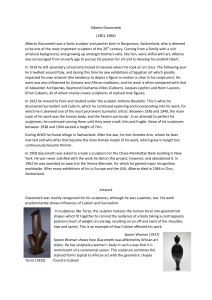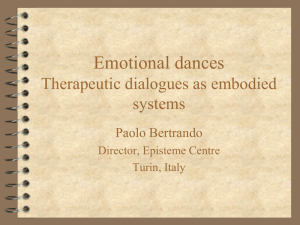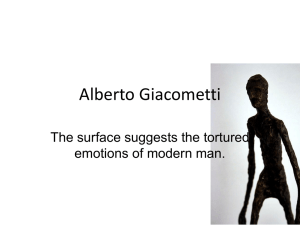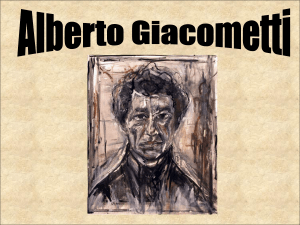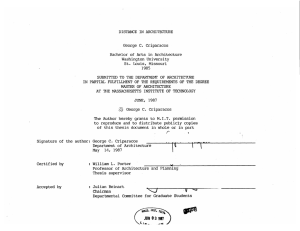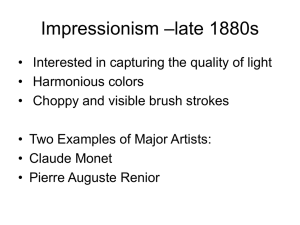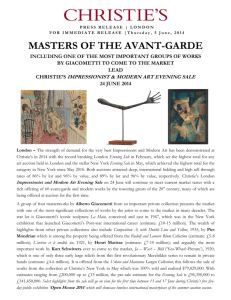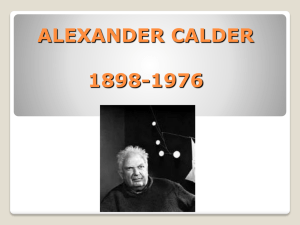Figures by Alberto Giacometti and Antony Gormley
advertisement
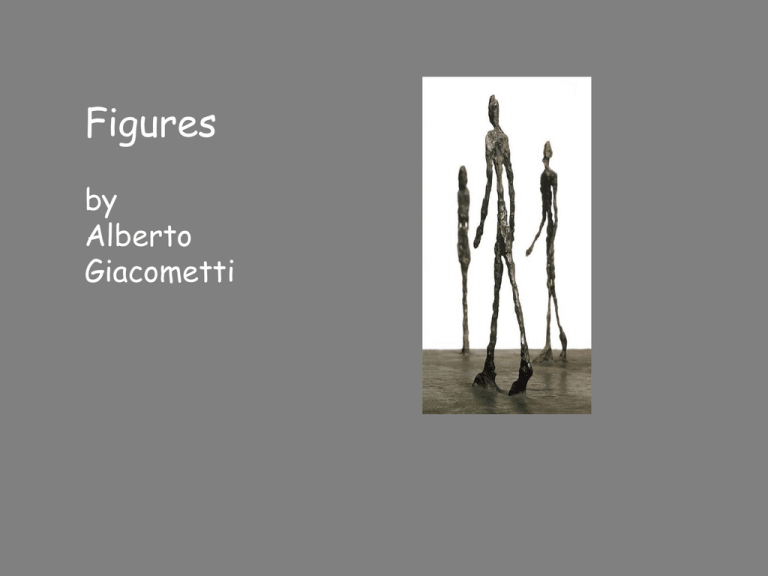
Figures by Alberto Giacometti Alberto Giacometti (1901-1966) was born in Switzerland. He was one of the most outstanding artists of the 20th Century. As a boy, Giacometti was very talented. His father was also a painter and he encouraged Alberto to go to Art school in Geneva. Giacometti remembered: “Once in my father's studio, when I was eighteen or nineteen, I was drawing some pears which were on a table. But they kept getting smaller and smaller. I'd begin again, and they'd always go back to exactly the same size. My father got irritated and said: 'Now start doing them as they are, as you see them..’ And he corrected them to lifesize. I tried to do them like that, but I couldn't help rubbing out; so I rubbed them out, and half an hour later my pears were exactly as small to the millimetre as the first ones.” To learn more about art, Giacometti travelled to Italy and France, where he saw famous collections of paintings and sculptures. He settled in Paris where he had a studio. At first, he was inspired by African and Oceanic Art (from the Pacific Ocean islands) and abstract art. In 1939, at the start of World War 2, Giacometti returned to Switzerland. In 1940, he was working mostly on figures from memory. He began making very small, almost weightless figures. He remembered glimpsing a young woman in Paris. He would make the same figure of her over and over again, smaller and smaller, until it became fragile and minute . “ T o m y te rror th e sc ulp tu re s b e cam e sm alle r an d sm alle r. O n ly w h e n sm all w e re th e y lik e (th e p e rson ), b ut all th e sam e th e se d im e n sion s re vo lte d m e , an d tire le ssly I b e gan again , on ly to e n d up , a fe w m on th s la te r, at th e sam e p o in t.” W h e n h e p a c k e d u p to le a ve G e n e va a n d re tu rn to P a ris, h is to ta l o u tp u t w h ile h e w a s th e re f itte d in to h a lf -a -d o z e n m a tc h b o x e s! I t w a s o n ly w h e n h e re tu rn e d to P a ris a f te r th e w a r th a t h e f o u n d h im se lf a b le to m a k e sc u lp tu re s o f m o re n o rm a l d im e n sio n s, b u t n o w th e y w e re ta ll a n d th in . Giacometti continued to create pencil-fine sculptures in black metal. He believed it was impossible to capture an accurate portrait, but he tried to get the sense of the person through small differences - the slope of the shoulders, the tilt of the head. He manages to mix details with a sense of seeing a far-off figure. Women are usually shown standing, men are shown striding. Giacometti said “How can any sculptor know and make known to anybody else, the being who sits before them?” The surfaces of Giacometti’s figures still bear the subtle imprint of his fingers. Giacometti liked to imagine his sculptures positioned on a street corner, or crossing a busy town square, out there in the real world. Giacometti also made figures of animals like this dog and cat. In the 1950s Giacometti became more famous and his sculptures were popular following a successful exhibition in New York, U.S.A., in 1948. However, he was never really happy being famous and continued to live and work in the same shabby studio in Paris that he had shared with his brother Diego (a furniture designer), since the 1920s. Giacometti was awarded a major prize for sculpture in 1962, but then his health began to fail. He died of heart disease in Switzerland in June 1966. Examples of his sculptures can be seen in Galleries all over the world.
